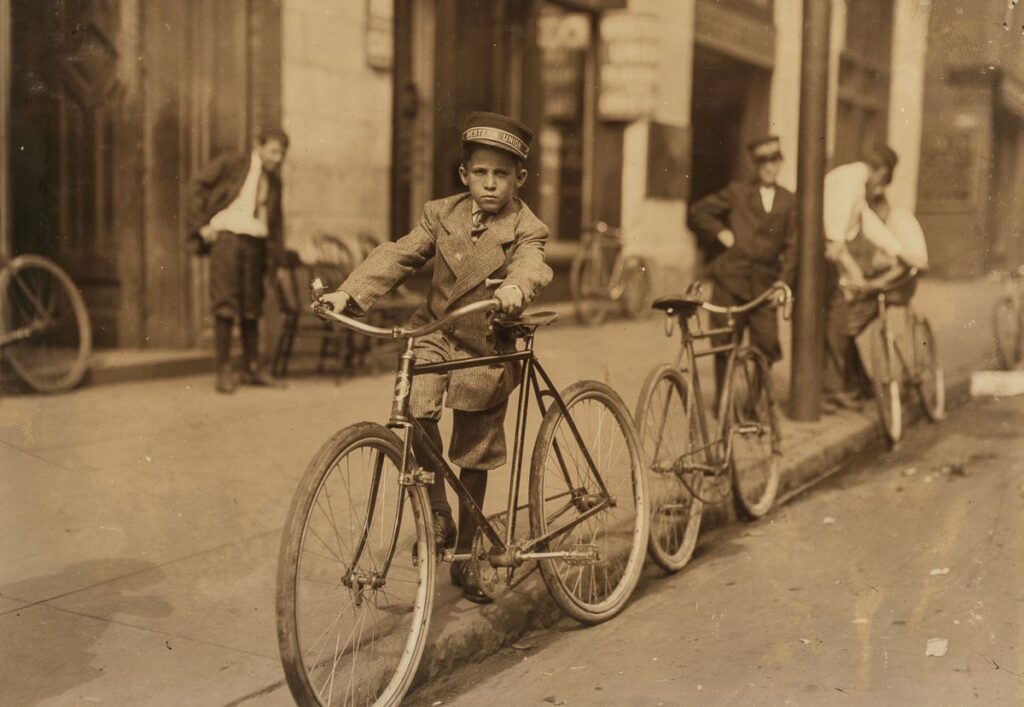In conclusion, based on my research, learning to ride a bike is an equal, if not better signifier of a child’s transition to adulthood than other rites of passage like learning to tie your shoe, or losing your first tooth. For generations of American children, the day they learned to ride a bike opened a whole new chapter in their life. Their options for play, work, contribution to the family, and fun expanded massively the second they understood how to balance and pedal down the road on a bicycle. For a lot of kids, this would mean working harder and longer than they ever had. They could now ride their bikes to a job, deliver messages or packages by bike as a job, or run errands and chores in place of their parents if need be. This allowed them to be far more useful to their families and to their community as a whole. Advertisements painted children with bikes as such. They were young members of society, pivotal in the day-to-day function of life in the United States. They are your trusty paper boys or bike messenger, or your patriotic neighborhood boy scout, but once they had a bike they were not just a child. As the saying goes, you never forget how to ride a bike, but as it turns out, once you’ve learned, nobody else forgets that you know how to ride a bike. As a result, you’ll be treated as a more mature person every day after learning to ride a bike than you ever were before you knew how.
